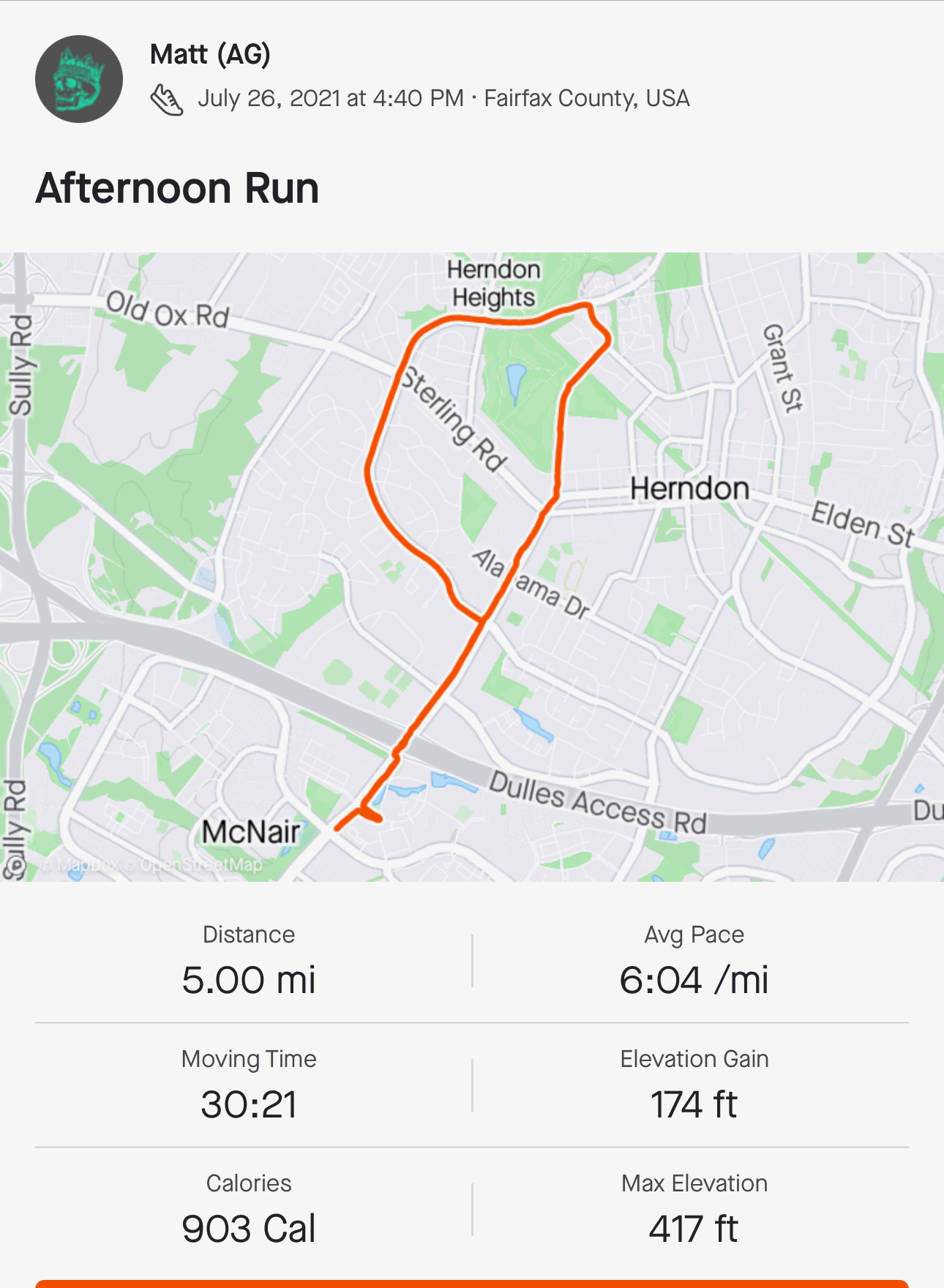Welcome to the Acid Gambit Substack! I greatly appreciate all of you who are currently subscribed. You drive me to work harder and produce high quality posts to improve our health, fitness, and mentality towards training. If you haven’t subscribed, join 1,030 smart, curious athletes on our journey to 10k subscribers:
The Need For Speed
Maybe it’s the masculine urge to run faster than everything around you, or beat that car next to you to the stoplight. Competition is good, drives performance, and even has a large impact on our hormones (ref Huberman lab #15). It could also be a requirement for law enforcement or military standards. Regardless, today we break down what’s required of you to hit benchmark times in specific running distances.
My recorded PR 5-miler was 30:21. Ironically this was also during a work trip, dehydrated, and off my rhythm on a summer afternoon. Sometimes being out of our routines is just the thing we need to do something special. This time is not spectacular, but similar to my 12 miler time, certainly top 10%. My 2 miler times hover in the 11:30s and 11:45-12:00 for the ACFT. My PR 1.5 milers were around 8:45, though I no longer do those. I previously ran cross country / played soccer in HS and was the captain of the triathlon team in college. As a result, I have a bit of an understanding when it comes to speed and endurance training. Now I personally focus on a fun blend of strength, distance running, and physique. Am I qualified? Idk. Use the following information accordingly.
An important note prior to starting this: you MUST define your number one priority. If you want to hit a certain run time this will be your primary focus, not maintaining your bench press PR. Simultaneous strength and conditioning progress can be made. I’m not here to dispute that. Rather, focusing on a specific skill to become VERY good is what we’re focusing on. There are alternative methods like periodization (specific periods for endurance, then strength, repeat) that can be done, but that’s for another post. The bottom line, if you want to hit top 1% numbers, make the decision that this will be your focus for an extended period of time.
How hard will this be? It depends on the day. Some days should be VERY difficult and others extremely easy - like any proper training program. Managing intensity throughout the week is crucial. A major problem a lot of newer athletes make is bleeding the hard days into easy/moderate and allowing easy days to become moderate/difficult. It is not a bad thing to have easy days. I think that “every day should be hard” is a cultural phenomenon driven by social media gurus that is absolutely ruining the general population’s idea of what a proper training regimen should look like. During this program, you will learn how to understand your body’s feedback during training. You will understand the correlation between how you feel and your heart rate, ability to be conversational (running at a pace you could hold a conversation at), and general training related stress levels during a session. Below I break down the different run types. Some days should be very difficult where you push yourself hard. Other days should be easy where you relax.
Types of Sessions
Keep reading with a 7-day free trial
Subscribe to ACID GAMBIT to keep reading this post and get 7 days of free access to the full post archives.


